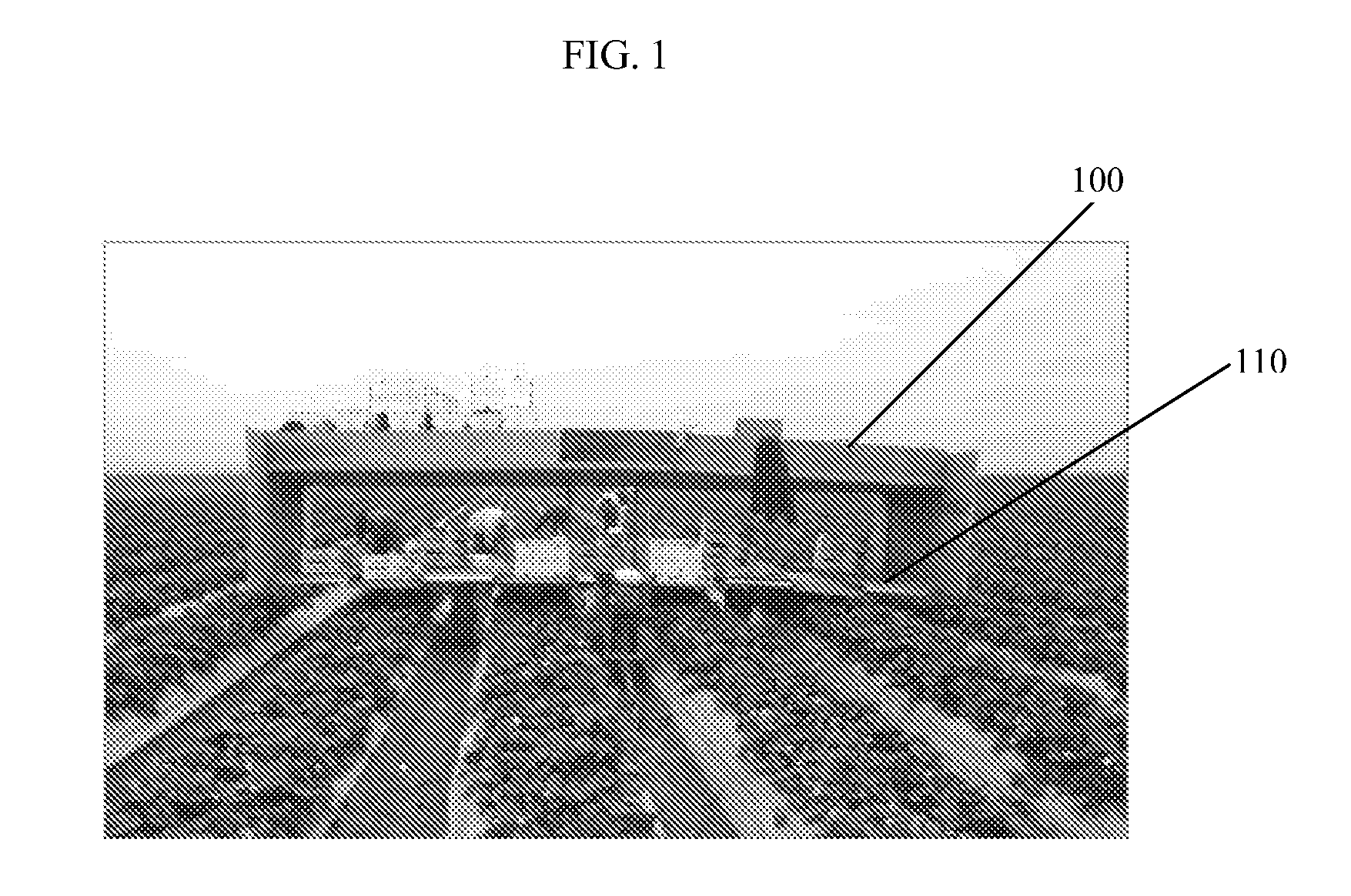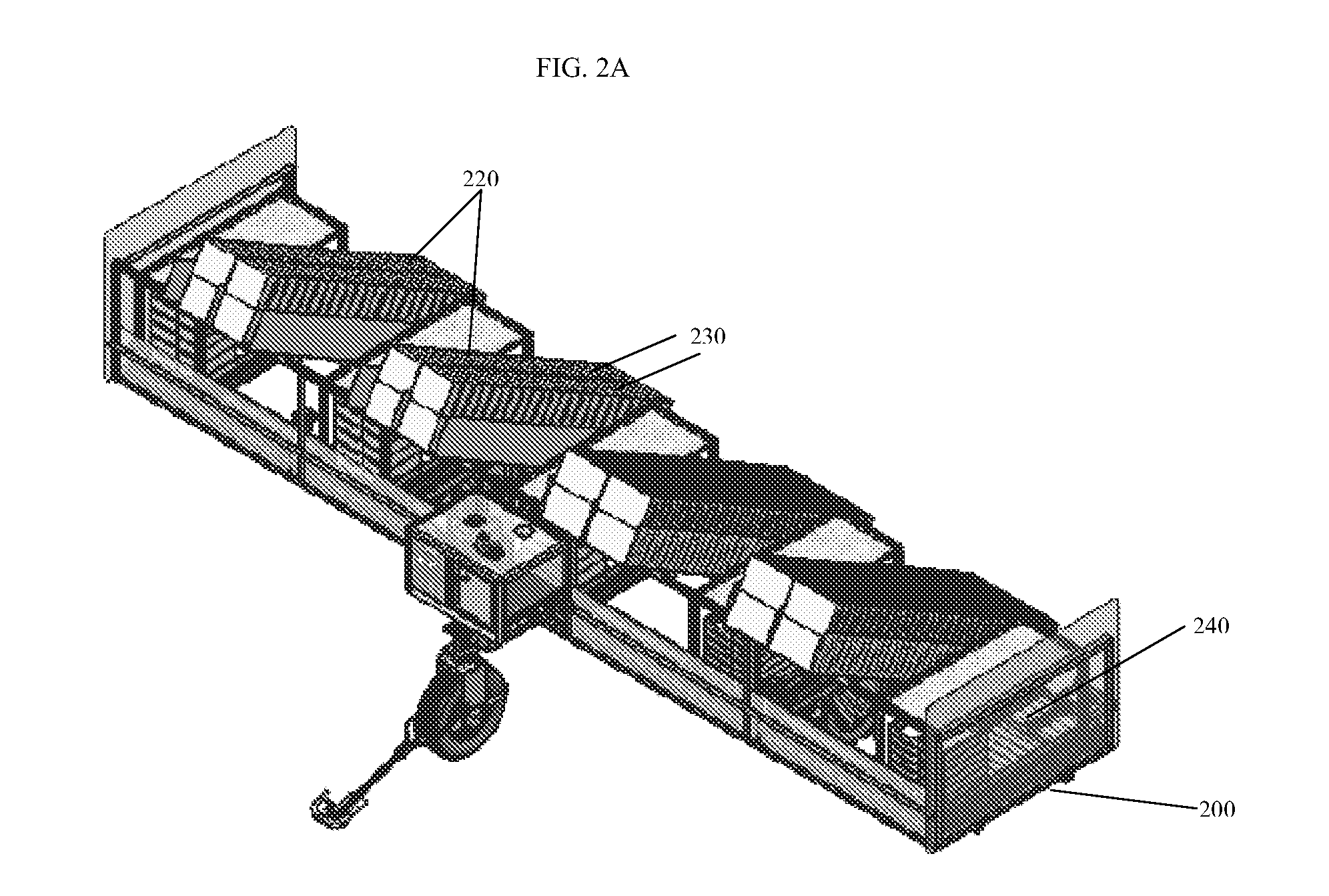Harvest aid machine and method of use
a technology of harvesting aid and harvesting machine, which is applied in the directions of transportation, packaging, transportation items, etc., can solve the problems of affecting the speed of crop harvesting, and the equipment of the harvesting machine is not adequate for other crops, so as to prevent work related injuries, speed up the working pace, and maximize the work pace
- Summary
- Abstract
- Description
- Claims
- Application Information
AI Technical Summary
Benefits of technology
Problems solved by technology
Method used
Image
Examples
second embodiment
[0055]FIG. 2 illustrates a harvest aid machine 200 of the present application. In an exemplary embodiment, a crate storage unit 220 may be provided in which empty crates are gravity-dispensed. In an exemplary embodiment, crate storage unit 220 includes chute assembly 230 for storage of empty crates. The dimensioning of the chute assembly 230 may be configured in adjustable sections for storing 52″, 64″ and 68″ crates.
[0056]Crate storage unit 220 may be further adapted for receiving packed crates. In an exemplary embodiment, crate storage unit 220 includes a roller table 240 for receiving packed crates. The roller table 240 is secured to the chassis at the rear side of the machine and to a hydraulic cylinder 250 at a location proximate to the front side of the machine 200. The default position of the roller table 240 is sloped from the rear side of the machine towards the front side of the machine such that the roller table 240 is relatively higher off the ground at the rear side of ...
fourth embodiment
[0080]According to the present application, FIG. 7 illustratively depicts a perspective view of the back of the harvest aid machine 400. The harvest aid machine 400 comprises a main chassis 405 which includes various components. The bottom of the machine includes a front or steering leg 480, a right leg 481 and a left leg 482. Each leg can have a respective wheel attached thereto. As in the other embodiments, each leg may have a respective stanchion 485. Each universal, single-sided wheel stanchion 485 may enclose hydraulic motors, turn sprockets, chains, etc., or any combination thereof, of the wheel assembly. Wheel stanchion 485 may house one or more propelled wheels. In an exemplary embodiment, wheel stanchion 485 is a universal, single sided drive leg that is extra narrow with, for example, a 4:1 gear reduction. The single sided design permits easier access and maintenance, such as changing a tire. Wheel stanchion 485 may also include a sealed oil bath design to keep internal co...
PUM
 Login to View More
Login to View More Abstract
Description
Claims
Application Information
 Login to View More
Login to View More - R&D
- Intellectual Property
- Life Sciences
- Materials
- Tech Scout
- Unparalleled Data Quality
- Higher Quality Content
- 60% Fewer Hallucinations
Browse by: Latest US Patents, China's latest patents, Technical Efficacy Thesaurus, Application Domain, Technology Topic, Popular Technical Reports.
© 2025 PatSnap. All rights reserved.Legal|Privacy policy|Modern Slavery Act Transparency Statement|Sitemap|About US| Contact US: help@patsnap.com



